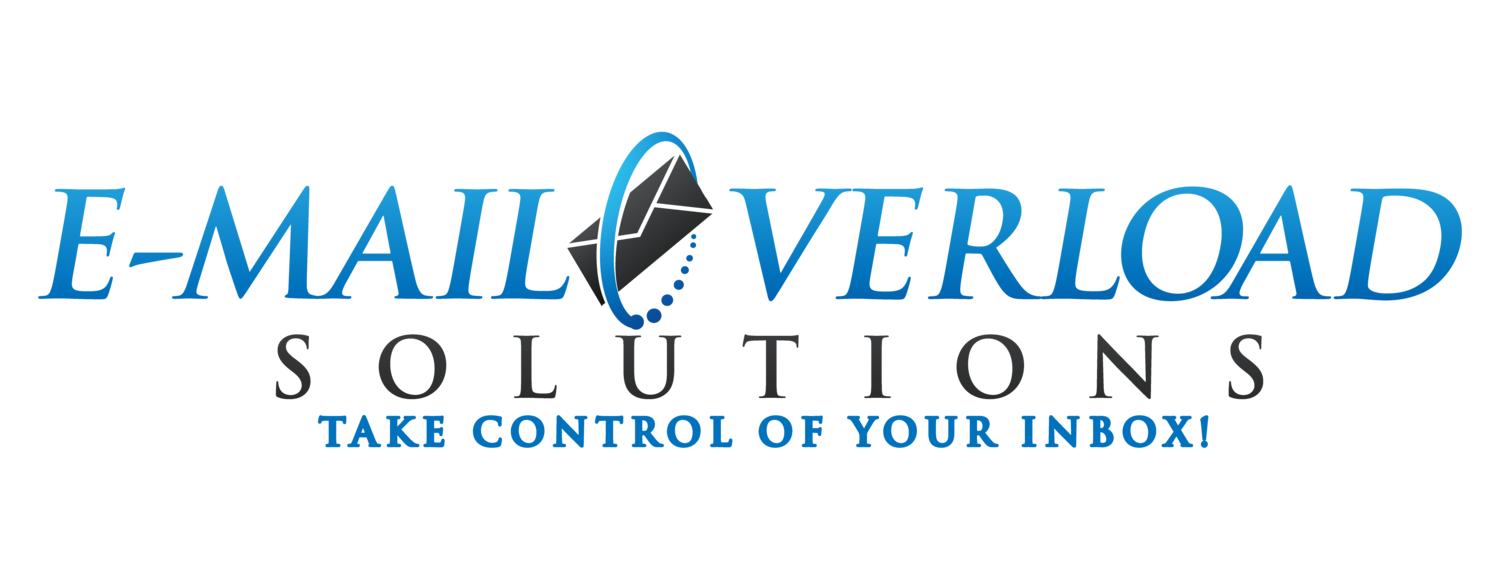It's a New Year - Time for some Annual Inbox Housekeeping!
/The New Year is a great time to perform your annual Inbox Housekeeping.
There are six key areas to review at the start of each year as part of an annual Inbox Review and Clean-Up, or what I like to call “Annual Inbox Housekeeping”:
Folder Structures
Categories/Flags
Automated Rules
Inbox Layout
Calendar Appointments
Tasks
Now, let me detail each of these areas in a bit more detail.
Folder Structures
Although some research suggests that Folders are more work than they are worth, I still use Email folders fairly extensively for my Work Email (less so for my personal Email where I primarily rely on Searching).
Navigate through your Inbox Folders and determine if there are:
Folders you can delete because the contents are no longer important.
Folders that should be renamed to something more helpful or meaningful.
Folders that should be merged with another folder because they are duplicative.
New Folders that need to be created to support new projects.
Folders that need to be moved or reorganized to be in a more logical structure or order.
If you want some help on managing your folders in Microsoft Outlook, check-out my prior post on Outlook Folders Tips and Tricks.
Categories and/or Flags
I also make the select use of Flags for Emails and Categories for my Tasks.
Review the Categories and Flags in your Email system and determine if there are:
Categories you can delete because they are no longer important.
Categories that should be renamed.
Categories that should be merged with another category.
New Categories that need to be created.
Make sure to review my prior post on using Categories in Email processing, as well as how to use Flags in your Inbox.
Automated Rules
I use Inbox rules to perform automated Inbox tasks, including deleting Emails I never want to see, routing specific Emails to designated folders, and notifying me when Emails arrive from certain individuals.
Review all of your Email rules and consider:
Do all the Rules still make sense?
Are there Rules that need to be deleted since they are no longer relevant?
Are there new Rules to create to automate certain activities?
Existing Rules that need to modified, such as changing the list of people that trigger notification alarms.
Make sure to review my prior posts on setting-up Inbox Rules, and defining a rule to route select Emails to a designated Reading List folder.
Inbox Layout
I like to keep only a limited number of fields available in the Inbox, so that I have as much “screen space” as possible for performing my Inbox processing and triage.
Sometimes, the layout gets modified for a specific folder view, or fields may get accidentally moved around, added, or deleted over time.
As you are reviewing your folders, keep an eye on the Inbox layout and consider:
Are there any changes you want to make to the Inbox layout.
Fields to add, delete, or move in your Inbox view.
Assign the use of the Reading Pane to any folders?
Review your Conditional Formatting rules, so Emails from specific people, or that contain specific topics, show-up in different colors or fonts.
Please review my prior post on how to set-up Conditional Formatting in your Inbox.
Calendar Appointments
I spend (unfortunately) a good deal of my time in meetings as part of participating on projects and being part of a big corporation.
There are also recurring meetings I have with colleagues, workers, and bosses.
I also block-off my calendar for specific "high priority" tasks or activities I need to perform by deadlines, such as dedicated time to work on creating my work objectives for the new year.
Review your Weekly Calendar Views and consider:
Can you delete appointments no longer needed due to completed projects or departed colleagues.
Can you change the frequency of meeting recurrences (hopefully to less frequent!) or reduce the time allocated to the meeting (hopefully to shorter!).
Do you need to create new recurring meetings to support new projects or team members.
Do you need to block-out time for any big activities you need to accomplish.
Mark any planned vacation or personal days as "out of office".
This is also a good opportunity to look at your defined Calendar view. If you are an Outlook user, consider if you wish to make use of the To Do bar.
Tasks
I create Tasks out of Emails that have specific “To Do” Action Items that will take time to complete.
I also create recurring Tasks for Administrative items I perform periodically, such as my monthly Travel Expense Report, or completing a Quarterly status update.
Review all your open and recurring tasks and consider:
Tasks that were completed, or are no longer relevant, that can be deleted.
Are all your existing Recurring Tasks still valid.
Any new Recurring Tasks that need to be created.
The Categories, Due Dates, and Priorities assigned to all the Tasks.
“It typically takes me several sessions over a few days to work through my annual Inbox housecleaning. But it is well worth the effort and I highly recommend spending the time!”
By taking the time to go through these items, it helps to eliminate scores of items from my Inbox, Calendar, or Tasks that are no longer important. It also ensures I "readjust" my Inbox organization for the new, deleted, or changed projects or goals for the New Year.
Do you perform an annual review of your Inbox?
What activities do you perform as part of this process?
Additional Resource:
Have some real housecleaning to perform as opposed to Inbox Housecleaning?
Check out the The Guide to Creating a Detailed Household Chores List, which contains great tips on how to keep your house as clean and organized as your Inbox!












